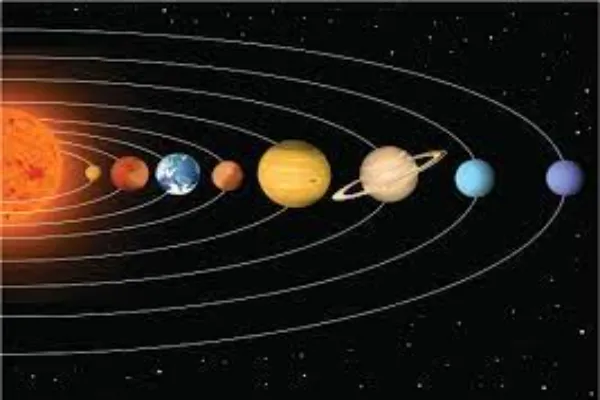Interesting Facts About the Planets

Journeying Through the Solar System’s Tapestry of Fascinating Planetary Facts
Within our system every planet has its own fascinating story to tell, adorned with captivating characteristics and cosmic peculiarities. Let us embark on a journey to uncover intriguing details, about these bodies unraveling the enigmatic phenomena that set each planet apart as an awe inspiring and distinct entity.
Mercury’s Peculiar Orbit
Mercury, the planet, to the Sun has its unique rhythm in orbit. Unlike planets Mercurys rotation doesn’t sync perfectly with its orbit. This creates a scenario where a day on Mercury (one rotation) actually takes longer than a year (a full orbit, around the Sun). This cosmic quirk means that if you were standing on Mercury you’d encounter a day and endure intense heat throughout the year.
The Retrograde Rebel Venus
Venus, often called Earths sibling planet has a way of rotating. Unlike planets that rotate in a motion (, from west to east) Venus spins in the opposite direction, known as retrograde rotation. So if you were standing on Venus you would see the Sun rise in the west and set in the east. This unique celestial characteristic distinguishes Venus from planets, in our system.
The Mighty Gas Giants Jupiter and Saturn
The gas giants, within our system have always fascinated astronomers due to their characteristics. Jupiter, known for its atmosphere is home, to the Great Red Spot—a massive storm system that surpasses the size of Earth. On the hand Saturn is adorned with a mesmerizing ring system composed of particles varying in size from minuscule grains to moon sized fragments. This celestial spectacle can even be observed from our viewpoint adding to its allure.
The Red Planet Mars
Mars has always fascinated humans with its color and has been a subject of exploration, for a long time. One of the aspects is Olympus Mons, which stands as the tallest volcano in our solar system towering over 13 miles (21 kilometers). Additionally Mars boasts Valles Marineris, a canyon system that surpasses Earths Grand Canyon in size stretching, over 2,500 miles (4,000 kilometers).
Neptune and Uranus Ice Giants
Neptune and Uranus the giants that exist in the parts of our solar system have their own cosmic puzzles. These two planets have tilts, in their axes with Uranus being tilted to the point where it essentially rolls on its side. Scientists speculate that this peculiar orientation is a consequence of encounters with celestial objects, which adds an intriguing element, to these faraway icy domains.
The Interesting Facts About the Planets
The planets, in our system are celestial bodies each possessing its own distinct and captivating characteristics. One remarkable aspect is the size of Jupiter, which earns it the title of being the planet within our cosmic vicinity. This gaseous behemoth is of magnitude that it could house over 1,300 Earths, within its interior.

The immense gravitational pull of Jupiter not shapes its atmosphere, which is known for iconic features, like the Great Red Spot but it also plays a crucial role in molding the orbits of nearby celestial bodies.
Moving closer towards Jupiter we come across Saturns mesmerizing rings that make it stand out as one of the stunning planets. While there are ringed planets in our system Saturns rings are unmatched in their extent and intricacy. Comprised of particles ranging from grains to larger moonlets Saturns rings create a captivating spectacle that has fascinated astronomers for centuries.
Despite their appearance these rings are dynamic and constantly changing due to interactions with Saturns moons. The exquisite beauty and intricate complexity of Saturns ring system serve as a testament to the dance performed by bodies in our cosmic neighborhood.
As we journey through space each planet emerges as a wonder showcasing the forces and processes that shape our solar system. From the scorching landscapes of Mercury, to the realms of Neptune our planetary companions continue to entice us to explore, discover and unravel the tapestry that surrounds us.